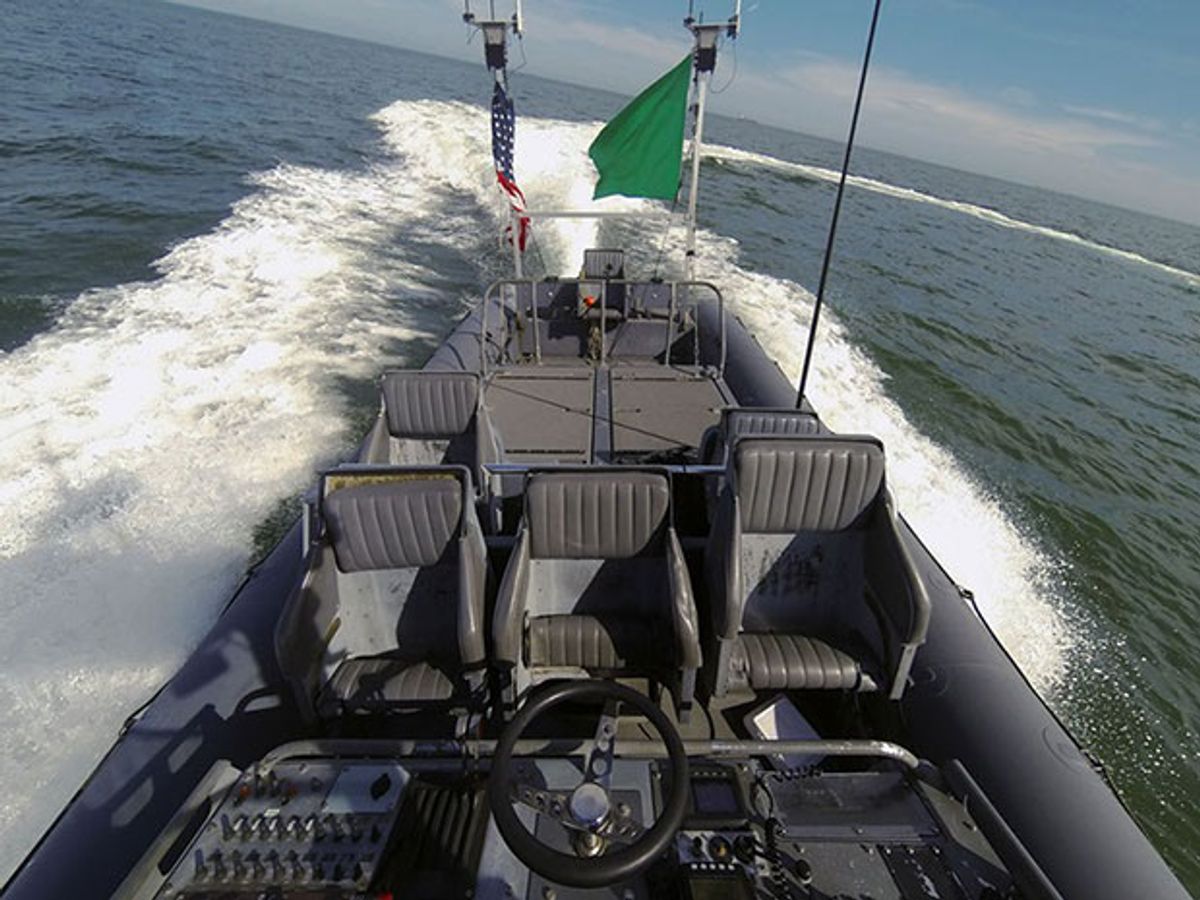Drone boats belonging to the U.S. Navy have begun learning to work together like a swarm with a shared hive mind. Two years ago, they would have individually reacted to possible threats by all swarming over like a chaotic group of kids learning to play soccer for the first time. Now the drone boats have showed that they can cooperate intelligently as a team to defend a harbor area against intruders.
The U.S. Office of Naval Research (ONR) held its latest robot swarm demonstration in the lower Chesapeake Bay off the Virginia coast for about a month. Four drone boats showed off their improved control and navigation software by patrolling an area of 4 nautical miles by 4 nautical miles.
If they spotted a possible threat, the swarm of roboboats would collectively decide which of them would go track and trail the intruder vessel. In the future, such drone boats could act as a first line of defense by scouting and screening for larger Navy warships manned by sailors.
“We envision unmanned boats doing protection missions, escort missions, intelligence, surveillance, and reconnaissance missions,” said Cmdr. Luis Molina, deputy department head of ONR’s Sea Warfare and Weapons Department, during a press briefing last week.
Swarms of drone boats could help prevent attacks such as the suicide bombing on the U.S.S. Cole on 12 October 2000. On that day, two Al Qaeda suicide bombers drove an explosive-laden motorboat up alongside the U.S. Navy destroyer as it was refueling in the port of Aden, Yemen. After exchanging greetings with U.S. sailors, the suicide bombers detonated their deadly payload, killing 17 crew members and wounding 39.
The recent robot swarm demonstration in the Chesapeake Bay practiced a harbor defense mission designed to prevent such attacks. In the test, the drone boats tried to coordinate their actions to execute four different behaviors without direct human control: patrol, classification, track, and trail.
A previous robot swarm test had already demonstrated some autonomous technologies on Virginia’s James River in 2014. In that case, a swarm of five autonomous boats escorted a manned ship and then broke off to intercept a vessel acting as a possible intruder. Each of the drone boats was controlled by a system called Control Architecture for Robotic Agent Command and Sensing (CARACaS). Such software enables each individual drone boat to plot their own paths to reach certain destinations and avoid collisions.
The CARACaS software has gone through a major upgrade since those earlier demonstrations, said Robert Brizzolara, an ONR program officer. In 2014, the software already enabled the drone boats to share any data their radar and cameras collected about potential intruders. But ONR engineers have now expanded the library of behaviors that can direct the actions of the swarm.
“Now they’re operating as a team rather than individuals,” Brizzolara said.
Human supervisors standing on shore were able to watch the drone boat swarm and issue broad mission orders if needed. But for the most part, they simply assigned a general mission to the drone boats and let the robotic CARACaS software do its thing.
Another improvement was the swarm’s ability to identify intruder vessels as possible threats. Such “automated vessel recognition” currently relies on a library of images showing certain boats or ships that could be potential threats. The ONR declined to say if the classification capabilities of the CARACaS software used specific AI techniques such as machine learning algorithms for image recognition.
Officers emphasized that humans still have the final say on what the drone boat swarm should or should not check out as a threat. If human supervisors disagree with how the drone boat swarm classified a certain vessel as being “friendly,” they could reclassify the vessel as “unfriendly” so that the roboboats would react appropriately to the potential threat.
The ONR says the autonomous boat technology is not ready for primetime just yet. But the demonstrations have shown that the system can be installed on many common boats already being used by the U.S. Navy. That means existing manned vessels could be converted into drone boats at a much lower cost compared with developing a robot boat from scratch. Navy researchers have also been using components of the CARACaS software in the separate Sea Hunter program that has been building a larger robotic ship for tracking submarines.
Next up, ONR wants to ensure that their drone boat swarm can seamlessly switch between the different robotic behaviors when appropriate. “Behavior switching cues may be different depending on what the mission is,” Brizzolara said. “It’s not only about behaviors, but also about stitching behaviors together in a certain way.”
Jeremy Hsu has been working as a science and technology journalist in New York City since 2008. He has written on subjects as diverse as supercomputing and wearable electronics for IEEE Spectrum. When he’s not trying to wrap his head around the latest quantum computing news for Spectrum, he also contributes to a variety of publications such as Scientific American, Discover, Popular Science, and others. He is a graduate of New York University’s Science, Health & Environmental Reporting Program.



